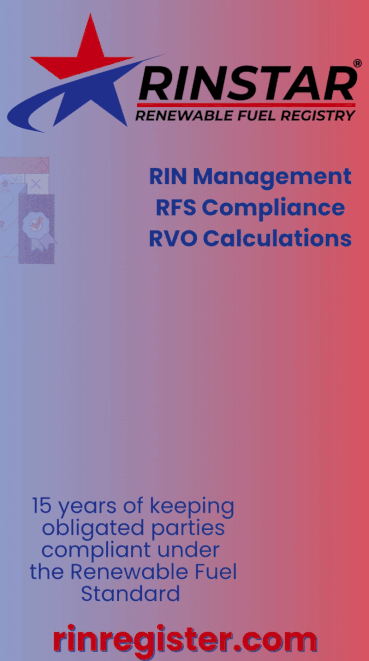Delivering net-zero shipping by 2050: Introducing the Green Balance Mechanism
- The World Shipping Council
- Feb 16, 2024
- 4 min read

The United Nations’ International Maritime Organization, the global shipping regulator, has set a target of net-zero carbon emissions by 2050 for the industry, and now needs to develop climate regulations by 2025 making it possible to reach that target.
A core challenge is how to craft a global greenhouse-gas (GHG) pricing regulation that can bridge the price gap between the cleanest fuels and fossil fuels, driving investments in green fuels, without imposing an outsized cost on the global economy.
As member nations prepare for negotiations at the IMO Marine Environment Protection Committee 81st meeting (MEPC 81) in March, the World Shipping Council is bringing to the table a proposal on GHG pricing that can help solve this conundrum.
“We see the catastrophic effects of climate change every day, and as a significant emitter of greenhouse gases, the shipping industry must do its part and decarbonize by 2050,” WSC stated.
Container and vehicle carriers are building and already operating vessels that can run on the greenest fuels, but those fuels cost three to four times more, and the supply of green fuels is only a fraction of what is needed.
Global climate regulations are necessary to make it possible for carriers to operate on green fuels, and to incentivize fuel and energy providers to invest in new production capacity.
The WSC Green Balance Mechanism outlines a new approach to GHG pricing, which makes it possible to close the price gap between fossil fuels and green fuels, at the lowest possible overall cost:
Through the Green Balance Mechanism, fees are taken from fossil fuels and allocated to green fuels used, so that the average cost of fuel is equal.
The greater the GHG-emission reductions a fuel delivers on a well-to-wake lifecycle basis, the greater the financial allocation received.
The monies collected in any given year are determined by the amount of green fuels used, allowing for a relatively low fee at the start of the transition.
The minimum fee necessary to offset the price differential in a given year is collected and allocated to ships using green fuels that meet a specific GHG threshold. This ensures that green fuels can be produced and used and does so with the least possible cost to transportation.
The emission reductions required for a fuel to receive a price-balancing allocation are linked to IMO decarbonization requirements, increasing in stringency toward the 2050 net-zero goal.
The Green Balance Mechanism is adaptable and fully integrated with a GHG fuel-intensity standard. It can be used as a targeted GHG pricing mechanism, or a possible addition to an integrated measure.
Other fees can be added to raise funds for climate mitigation initiatives and research, development and demonstration projects, to provide a just and equitable transition.
The Green Balance Mechanism makes it economically rational and attractive for both ship owners and energy providers to invest in fuels and technologies that deliver deep GHG reductions from the day the regulation takes effect.
Existing and soon-to-be delivered dual-fuel ships will be able to operate on the cleanest fuels, rather than having to wait years before economically viable fuels are available.
This allows production of the cleanest fuels to grow more quickly, accelerating economies of scale that will push down the cost of green fuels, getting us to zero in the most economically efficient way possible.
“Liner carriers are committed to decarbonizing shipping and eager to support the development of effective and timely global climate regulations through the IMO,” said John Butler, president and CEO of the World Shipping Council. “Switching from fossil fuels to green-energy sources for the engine of global trade will take time and require massive private and public investments. It is our shared responsibility to make sure we meet the needs of our climate in a way that minimizes the cost for the global economy.”
Rodolphe Saadé, chairman and CEO of CMA-CGM, said, “Decarbonizing shipping will not be achieved by a single company, it will take the efforts and involvement of all the stakeholders. The CMA-CGM Group has already invested more than $15 billion in decarbonizing its fleet, which will enable us to have 120 vessels capable of running on alternative fuels by 2028. As a next step we need to act collectively and to promote a level playing field at the global level for our industry. This is the aim of the ambitious positions we are advocating for with other shipping lines within the Word Shipping Council.”
Rolf Habben Jansen, CEO of Hapag-Lloyd, added, “The World Shipping Council’s proposal for the Green Balance Mechanism is a pragmatic step towards sustainable shipping. This GHG-pricing mechanism aims to promote a competitive shift to low-emission fuels, which is consistent with our sustainability measures, our goal to operate a net-zero fleet by 2045, and the shipping industry’s overall commitment to decarbonisation. Additionally, it promotes the production of alternative fuels and minimizes the economic burden on all stakeholders, ensuring a level playing field. These are crucial factors for a successful energy transition in maritime shipping.”
Kyung Bae Kim, CEO of HMM, said, “Climate change is a defining issue of our time, and HMM shares a sustainability vision of the global shipping industry. To achieve net-zero emissions by 2050, HMM has focused on enhancing carbon-footprint visibility, ordering methanol-powered vessels, and exploring clean-energy sources including biofuels, methanol and ammonia. We believe the Green Balance Mechanism proposed by WSC is expected to accelerate the industry’s broader transition to carbon neutrality.”
Maersk CEO Vincent Clerc said, “The year 2050 might seem distant, yet in the context of our climate ambitions, it is practically upon us. The IMO is at a crossroad that will determine our ability to decarbonize the shipping industry and achieve net-zero emissions. To get there, we need mechanisms that can bridge the transition from fossil-based to green fuel, and we call on IMO member states to take decisive actions that reward early adopters by compensating truly green vessels corresponding to their emissions reductions. This approach is critical for accelerating the retirement of fossil-fueled vessels.”


































